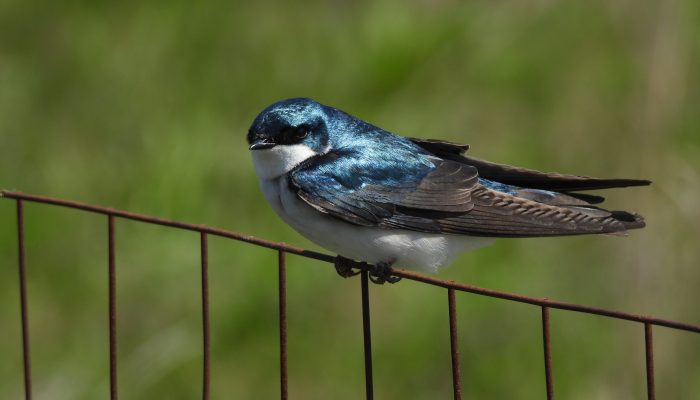By Tony Croasdale, Environmental Education Planner, Cobbs Creek Community Environmental Center
This time of year, many folks are posting instructions on how to provide shelter for stray cats. I understand why people think this is the right thing to do. Unfortunately, this compassion can endanger some of the wildlife that Parks & Rec is here to protect. Before feeding and sheltering cats, here’s what you need to consider…
One of the first invasive species
House cats are not native to this continent. They are the descendants of the Eurasian wildcat. And they are active hunters. Outdoor cats kill billions of birds and small mammals every year in the United States alone.
Our native wildlife–birds, small mammals, reptiles, and amphibians–did not evolve with wildcats. This means they did not develop behaviors to protect themselves from these predators.
Feeding feral cats does not stop them from killing wildlife. I feed my housecat, but it doesn’t stop her from killing mice. It is in their nature to kill. A single outside cat will kill hundreds to thousands of wild prey in their lifetime. Food and shelter provided to outside cats attract wildlife as well. This brings native animals even closer to their feline predators.
Feral cat colonies also attract people looking to dump unwanted cats. The trend towards “no-kill” shelters means that shelters can fill up and not accept any more cats. So, folks looking to get rid of their cats will dump them where they think the cats will find food and shelter.
I understand why people have a strong emotional attachment towards outside cats. Cats are popular domestic pets–and internet stars. They’re cute. We don’t want them to be cold and hungry. But what about wildlife like birds and reptiles? Many people feel the same way towards them. “Birders” and “herpers,” enjoy observing wild birds and herptiles. (Herptiles is the collective group of reptiles and amphibians).
Outside cats already have a negative impact on our native animals. Any help they get from humans gives them a greater advantage to kill more native animals. You may think letting a cat survive on its own is cruel, but consider the cruelty to other animals.
So how can you help?
If feeding and sheltering cats are environmentally irresponsible actions, then what should people do?
The best thing to do is to capture the cats and bring them to a shelter. TNR (Trap Neuter Release) is one popular solution. Unfortunately, there is no evidence that shows that this method works. Cats can have many litters a year. To reduce the cat population, you would need to capture the majority of cats each year. You would also need to prevent any new cats from ending up outside. This is difficult and unlikely.
Sometimes, the best thing to do is nothing at all. If you cannot remove cats from the wild, please do not feed and shelter them. Providing outside cats with more advantages stacks the deck against our helpless native wildlife.
Additional Reading
- The Moral Cost of Cats
- Critical Assessment of Claims Regarding Management of Feral Cats by Trap–Neuter–Return
- Population Ecology of Free-Roaming Cats and Interference Competition by Coyotes in Urban Parks
- The Impact of Free-ranging Domestic Cats on Wildlife of the United States




